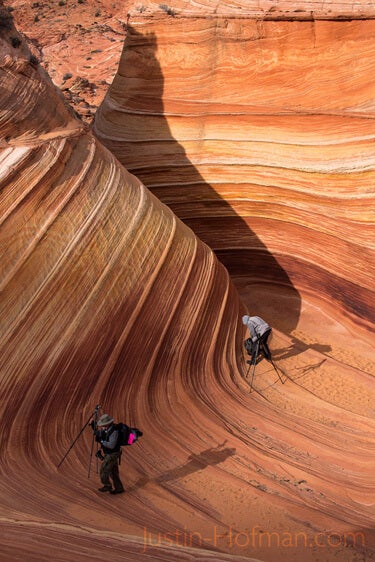Forgot Password?
Please enter your email address to receive a link for resetting your password.
Thank You
You will receive an email with further instructions. Please contact customer support if you need any further assistance.
Please verify your email address
A verification link has been sent to your email to activate your account. The link will be valid for 1 hour.
Please check the spam inbox if you can't find the email. If you still can't find it, we can resend it.
A verification link has been sent to your email 00:00

Tuesdays we like to bring you a few tips on how to improve your photography skills. This week we focus on – How can you get your image to stand out at an iconic (overshot) location? Printique Ambassador Justin Hofman gives us his tips.
Although it may not be totally obvious, I love the desert. Not as much as I love being in the ocean, but it’s a strong second. There are a few places on this planet I wish everyone could encounter. Unfortunately, being bipedal mammals, we do impact the very ground we walk on, so luckily there is a fairly strict permitting process which limits just how many people can visit Coyote Butte Wilderness’ most iconic feature, The Wave. Carved out of Navajo sandstone over thousands of years, The Wave is truly incredible and considered by many photographers as a rite of passage, a pilgrimage you could say. For the aspiring photographer, just getting to The Wave is challenging enough, but how do you make a picture that stands out amongst the thousands of other images? Even with the strict permitting process, nearly everyone who visits The Wave takes photos they are proud of, essentially saturating the market for beautiful, scenic, and “unique” desert shots.
Before I visit a popular site, I always do a Google Image search of the location just to see how others have shot the site. This is akin to digital scouting and starts my pre-visualization process. It also gives me a target to NOT shoot for. Google Image searches are a great way to see how everyone else has approached the subject. I am always trying to avoid the “postcard” shot or vacation snapshots that don’t stand out. Memorable photography is about capturing a scene in a unique way so I will intentionally avoid the most common angles if at all possible. I’ll also search Google Earth to get an overhead view and to get the lay of the land. This helps me build a mental map of an area I may have never been to before. I find I’m much more successful when shooting a subject I’ve seen before, but that’s not always an option so I’ll research a subject and visualize my shots as much as possible. The Photographer’s Ephemeris is a great app and allows me to find out what direction the sun will be shining on the subject (amongst a ton of other features), which will dictate the timing of the shoot.


Shadows at The Wave either make or break the photo and need to be taken into account when planning the best time to shoot.
Lastly, I talk to people. Especially locals. For The Wave, three Southwest photographers helped me considerably with locations, angles, times of day, and even attaining a permit. All three are extremely creative photographers with an impressive body of work.
The Second Wave offers less contrast amongst its stripes, but it’s still beautiful and sees much fewer visitors.
Don’t forget the power of black and white processing. No one will believe the color of the rocks anyways!
Wide angle lenses are key, but you’ll have a hard time keep people out of the shot.
I often try to avoid groups of photographers and explore unique angles. Although, at The Wave, the rocks really constrain your position so some of my best shots were taken from the peanut gallery.
I have a pretty strong aversion to standing in line amongst a bunch of photographers because I really don’t want the same angle as everyone else. If I can help it, I’ll wander around the site and look for something else to shoot. Due to the shape of the bowl, there are only so many places you can stand when photographing the Main Wave. Sadly, there are only so many angles you can shoot from, so you’re going to need another edge.
Unique light can help to capture the subject in a unique way. Being the high desert, clouds are experienced far less often than clear blue skies and offer something interesting for your photographs. Blue skies are boring. Clouds make the shot. It doesn’t happen every day, but having clouds really helps desert, and especially black and white photography. However, being in a drainage, darkening skies in this part of the world can mean dangerous conditions so I would never suggest any photographer shoots in the desert with threatening skies unless you’re familiar with the location. Anyone who has witnessed a desert flash flood can attest to this.


